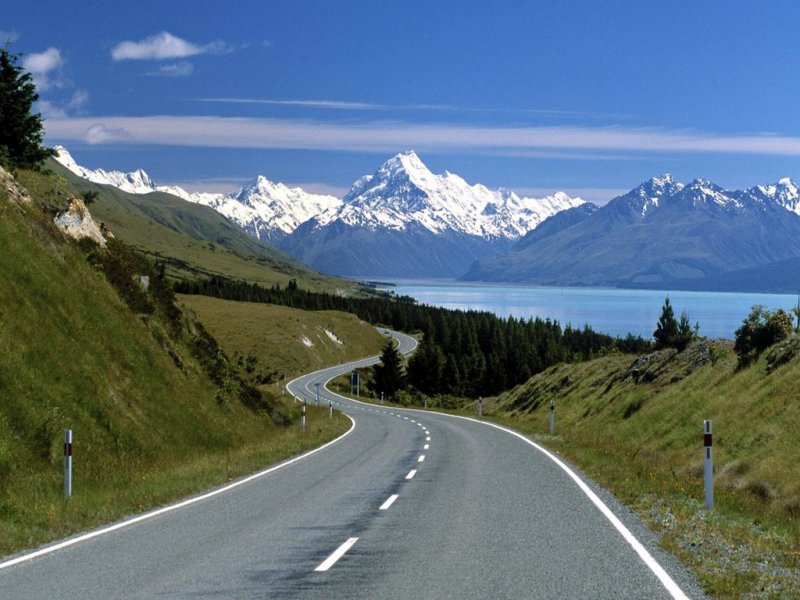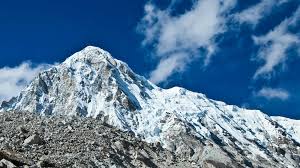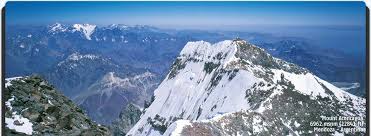
KNOCKING ON THE HEAVEN´S DOOR

“It is not the mountain we conquer, but ourselves.”
Sir Edmund Hillary
We do not need to cry for Argentina but we need to experience the wild scenery of one of the most beautiful countries in the world. Empowered with attractive mixture of polar landscapes and tropical mood, Argentina is offering the great wine, passionate tango and amazing silver. Just for a thought, the Latin name argentum means silver and it is linked to the early colonization and Spanish conquistadores. Based on the historical evidence, they have discovered the indigenous people with silver objects around the river Rio de la Plata and the local mountain Sierra de la Plata. Argentina has been born in silver dreams of new conquers but it has grown up as the land of breathtaking lakes, tough mountain peaks, fiestas and romantic street art and music.

If you have a moving spirit that seeks adventures and adrenaline, get on your bicycle and drive all week long across Argentina. There is nothing better for challenging your physical and mental capacity since Argentina offers full enjoyment for cycling holidays. You only need to be ready to be lost in the mist of some tundra, cloud forest or lonely lake and the Argentina story will be the story of your life.

Nevertheless, there is something else that is shaping the untouched grace of Argentina awaken in tango rhythm. Aconcagua, the highest mountain, the pride and the glory of Argentina, the alluring daughter of natural geomorphological universe. It is believed that this mystical name originates from ancient local languages and that presents the ‘Sentinel of Stone´, the range that reaches amazing height of 6,959 meters (22,841ft) and could be straightforward climbed. This usually means that there are no big technical demands for those who are interested in defeating the Sentinel Stone but that also means that there are great dangers on that road since this is one of the deadliest mountains ever. Aconcagua is the highest mountain outside of the Himalayas, the eyes of the Andes. Some experienced mountaineers have written the following thoughts about this Argentinian princess:” Aconcagua is in the very heart of the dramatic Andes mountain range, 112 kilometers north west of Mendoza city, the capital of Argentina’s principal winegrowing region (melt waters from these mountains irrigate the vineyards), while its summit is only five kilometers from Chile. Aconcagua’s allure (its shape, its superlatives, its accessibility, its non-technical routes) have proved irresistible for experienced mountaineers and adventurous novices making it one of the most climbed high mountains, with more than 3,000 people attempting the climb every year. Its fairly simple rise can be misleading, however, suggesting to some that Aconcagua is a boring mountain to look at. But Aconcagua is a fantastic looking peak – an asset surprisingly important in the mountaineering world. It is pyramidal in shape, rising up to two fairly clear peaks along a thin, winding ridge and towers well above its neighbouring peaks. It is a true mountain. A mountain with soul. Despite its non-technical status on one of the routes – no ropes are required – it isn’t a trip to be taken lightly. People die most years attempting the climb. The cold and lack of altitude acclimatisation are principal reasons for casualties. Almost half of the people attempting the climb do not make the summit.”

What is so risky about unpredictable Aconcagua? Exactly the fact that is unpredictable in its moods, weather style and unrevealed temptations. Many people think that the possibility to climb over Aconcagua without hard equipment is actually the chance to be on the top without sweating, freezing, bleeding or dying. This is everything but not true since this stone pearl has taken more than 125 lives in the past years, only because of people´s arrogance and ignorance. If we don’t need ropes to climb that doesn’t mean we don’t need to direct our climbing towards the weather conditions and local struggles on the road. The acclimatization is the worst part of the expedition because everything above 5,400 meters is known as the death zone. This is why the future Aconcagua visitors must think of having always with them the crampons and ice axe as well as the 4/5 season sleeping bag, mountaineering waterproof boots, trousers, jackets and gloves.

It is recommended to follow one of two principal walk-up routes, between December and January. One is the Normal Route that has no special demands and people enough fit for long climbing can chose it and undertake it, even without an ice axe and crampons. The second route is for advanced level of mountaineers and it is named as the Polish Glacier Traverse, invented by first Polish climbers. It is shorter but more difficult and more enchanting, combining glacier and river settings.

The whole trip should be between 15 and 20 days, especially if you have the starting point from the city of Mendoza, empowering yourself with the necessary permit to go climbing on Aconcagua. This permit could be issued, based on the passport and insurance, only personally at headquarter of Aconcagua National Park in Mendoza and costs US$700 in high season.

This donna of Andes is the tallest peak in all of Americas and in the Southern and Western Hemispheres, gifted with interesting vegetation, breezing wind, stormy moments and snowy corners that ruin the whole adventure. The majority of people that fail to get on the top of this former volcano are those that failed to deal with weather changes and the low of the oxygen. There are two summits, north and south and the both are connected through the Cresta del Guanaco, 1 km long (0,6 miles).

Aconcagua is described as Mountain of death because it is written that about three people each year die in attempt to conquer it. Their illogical behavior on this mountain bring them in the jaws of horrible death:” One of the most controversial cases was in 2009, when a video posted to the internet showed the failed rescue of an Italian-Argentinian mountain guide. 31-year-old Federico Campanini could be seen struggling weakly in the snow as his rescuers attempted to pull him to his feet. One rescuer declared, “Get up, you idiot,” while another interjected with “Go, damn it” and “Move, idiot!” and the cameraman can be heard begging God to give Campanini strength. Campanini was one of five people to die on Aconcagua that year”

This is not the ultimate race, the life project or the impossible mission. This is reality and Aconcagua is the mountain that deserves to be respected and through the rational action to be discovered and cherished as the final destination of human curiosity and love for high skies.


Sarah’s fascinating and elucidating article reminded me of various historical associations of Aconcagua: in 1835, Charles Darwin visited the area, and made some drawings of the bridge with large stalactites called ‘Puente del Inca’ (The Inca Bridge); a natural arch that forms a bridge over the local Vacas River.
The Aconcagua mummy is an Incan qhapaq hucha mummy of a seven-year-old boy, dated to around 500 BCE. The mummy is well-preserved, due to the extreme cold and dry conditions of its high altitude burial location. The frozen mummy was discovered by hikers in 1985 at 5,300 m (17,400 ft) on Aconcagua.
The mountain itself was created by the subduction of The Nazca Plate beneath The South American Plate. Aconcagua used to be an active stratovolcano (from the Late Cretaceous Epoch or Early Paleocene Epoch, through The Miocene Epoch) and consisted of several volcanic complexes on the edge of a basin with a shallow sea.
However, about 8 to 10 million years ago, the subduction angle started to decrease; resulting in a stopage of the melting and more horizontal stresses between the oceanic plate and the continent, causing the thrust faults that lifted Aconcagua up off its volcanic root. The rocks found on Aconcagua’s flanks are all volcanic and consist of lavas, breccias and pyroclastics. The shallow marine basin had already formed earlier (Triassic), even before Aconcagua arose as a volcano.
Nevertheless, volcanism has been present in this region for as long as this basin was around and volcanic deposits interfuse with marine deposits throughout the sequence. The colourful greenish, bluish and grey deposits that can be seen in The Horcones Valley and south of Puente Del Inca, are carbonates, limestones, turbidites and evaporates that filled this basin. The red coloured rocks are intrusions, cinder deposits and conglomerates of volcanic origin.
The first recorded ascent of Aconcagua was in 1897, by a European expedition led by the British mountaineer Edward FitzGerald (1871-1931). He failed to reach the summit himself over eight attempts, but the (Swiss) guide of the expedition, Matthias Zurbriggen, reached the summit first.
LikeLike
Another thriller, Sarah ! Just Beautiful !
This sounds like such a beautiful place from your description, and it makes me feel like going to Argentina to see such beauty !
One has to be very careful as to mountain climbing, as it is a very perilous sport ! It would just be sufficient to see the beauty from the bottom of the mountain or to just climb halfway through !
This article is so remindful of your article about the dangerous mountain road in Bolivia, another thriller !
Thank you so much, Sarah, for your geographical exploratory articles, as through them and through your description we get to visit those places with our eyes open ! It’s like a daydream !
LikeLike